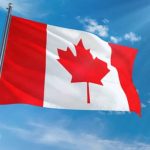From Dr. Jerry Ackerman, March 6, 2017
I am writing in response to your letter of February 24 as written by Ian Foucher, your Senior Policy Advisor, in which he argues that it would be a mistake to have the government create the necessary domestic currency to fund the tens of Billions of infrastructure that our country desperately requires. He warns that proceeding in this manner would result in excessive inflation, adverse economic conditions and costs, erosion of value of our currency, and a misallocation of our resources.
By referring you to outstanding and trustworthy professional analysts, in addition to the book of Joyce Nelson and accompanying excerpts, I intend to help you have a more perfect understanding of this matter. By reading what I am sharing with you in the following pages I hope you will come to see that to use the Bank of Canada need not be unduly inflationary. Instead, it is the best possible way to fund the needs of our country at this time, with far less interest and hence less cost. To use private financing will only result in further enrichment of the bankers of the world to the detriment of Canada.
References:
(a) With regard to inflation: John Maynard Keynes, Professor John Harvey, Michael Hudson, Ellen Brown;
(b) With regard to interest and usury: Margrit Kennedy, Ellen Brown;
(c) With regard to control of nations by financial institutions: Joyce Nelson, Daniel Estulin, Stefania Vitali, James B. Glatfelder, Stefano Battiston;
(d) With regard to the Canadian experience: Will Abram, Josh Ryan-Collins, Walter Stewart.
Inflation
John Maynard Keynes explained that adding money to the system will only increase prices when the economy is at full capacity.
This is because the Demand for goods and services precedes the Supply of those goods and services.
The formula for inflation as found in almost all economics texts is loosely expressed as “too much money chasing too few goods,” mathematically stated as money x velocity = price x quantity.
The assumption that velocity does not change is fallacious. Equally unreal is the assumption that the quantity supplied doesn’t change either. Professor John Harvey pointed out these fallacies in his 14 May 2011 Forbes article, “Money Growth Does Not Cause Inflation.”
Michael Hudson, in Financial Predators v. Labor, Industry, and Democracy, August 2, 2012, has studied hyperinflations wherever they have occurred. He explains: “Every hyperinflation in history has been caused by foreign debt service collapsing the exchange rate. The problem almost always has resulted from wartime foreign currency strains, not domestic spending. The dynamics of hyperinflation traced in such classics as Salomon Flink’s The Reichsbank and Economic Germany (1931) have been confirmed by studies of Chilean and other third world inflations.
“First the exchange rate plunges as economies pay for foreign military spending during the war, and then – in Germany’s case – reparations after the war ends. These payments lead the exchange rate to fall, increasing the price in local currency of buying imports priced in hard currencies. This price-rise for imported goods creates a price umbrella for domestic prices to follow suit. More domestic money is needed to finance economic activity at the higher price level. This German experience provides the classic example.”
Ellen Brown, in her blog for Public Banking Institute, February 2017, “Why QE for the People or for Infrastructure Need Not Be Inflationary,” reports, “As of January 2017, an estimated 9.4 percent of the US population remains unemployed or underemployed (including those who have given up looking for work). Added to that is the untapped output potential of robots, computers and innovations, such as 3D printers. Today, eight individuals own as much wealth as 50 percent of the global population. There is no way that the people at the top of the income pyramid can spend enough on consumer goods and services to generate the demand necessary to keep half the population employed. ‘Demand’ must come from the consuming class itself, and for that they need money to spend. They could get it through a universal unconditional basic income paid simply as a reward for living in the twenty-first century, when mechanization and computerization have made labor largely obsolete. This would not be ‘welfare.’ The goal would be to create a money supply sufficient to produce the demand needed to clear the shelves of unsold products and drive the production of the new GDP.”
She asks rhetorically, “What of the concern that increased consumption will exhaust already-limited natural resources? Again, that need not happen if the funds are properly directed. There is a whole range of services that do not use natural resources – education, children, eldercare, sanitation, music, art, and the like – on which people could be put to work if the money were available to fund those services. Moreover, investing new money in infrastructure, research and development can actually save resources, by making their use more efficient.”
Interest and Usury
Margrit Kennedy, in Occupy Money – Creating an Economy Where Everybody Wins (2012), illustrates the devastating consequence of compound interest (interest on interest) in an amusing way by asking, “Would you prefer to receive $10,000 a week for a year or 1 cent the first week, doubled each subsequent week?”
She likens this quantitative exponential growth of our money system to a cancer cell, and distinguishes it from qualitative growth of knowledge, skills and understanding. She goes on to say: “Until recently most of us assumed that states can’t go bankrupt. We allowed them to go into massive debt to their own citizens and international investors. We have now learned that our assumption was illusory.
“What happened in Japan, in Asia, in Latin America, and recently in Europe in Portugal, Iceland, Ireland, Greece can happen tomorrow in the USA, Canada, England, France or Germany; all are going down the same path. Every German finance minister since the founding of the Federal Republic has promised to reduce the national debt. None has succeeded so far for more than brief periods. Does this not apply to most other countries in the world?
“The decisive factor here is not the absolute level of debt, but the rapid growth of the interest burden this debt entails, resulting of course from compound interest. For decades now, interest on the national debt has been the second highest expenditure in the German budget, after social security.”
The following are Canadian examples of the same:
- Canada’s borrowed debt burden is less than $40 billion, but the interest burden is approaching $600 billion.
- When the Brampton hospital was built with private and public funds, this cost several hundred million $ more than it needed to (according to the Auditor General’s report). Costs were 170% of the Peterborough hospital built with solely public funds, and provided just 25% more beds.
- By guaranteeing private funding for the Muskrat Falls hydro project in Labrador (latest estimate $11 billion), the federal government is “on the hook” for billions more than would have been necessary with public funding via the Bank of Canada.
- The Bridge Commission for the two Halifax-Dartmouth bridges, built in 1956 and 1970, used foreign banks to pay for the $103 million of construction costs: American, then German, then Swiss, and in 1991 the Province of Nova Scotia guaranteed a Bank of Montreal loan for the $100 million still owing – @ 11.5%! Tolls from Day 1 (now more than 30 million crossings annually) are still paying for maintenance, but cannot possibly service the capital debt.
Margrit goes on to ask: “What does all this have to do with you? You think you only pay interest when you’ve borrowed money or can’t clear you credit card when due.” She goes on to show why this is not true: “A closer look shows this belief to be false. Every price we pay contains an interest component – interest that the producer of the goods or services we buy have to pay to a bank for the loan they took out to purchase machines and equipment, or to pay wages.
“Research results for Germany in the 1980s – a low interest period:
Garbage collection fees interest component …………………..12%
Price of drinking water …………………………………………………38%
Rent for gov’t subsidized housing …………………………….77%
“In 2006, average interest burden in expenditures of a German household for everyday goods and services? 40%!”
Let us compare the above with the interest component being paid by Canadians: the average Canadian householder spends 60% more than his or her monthly discretionary income. If the shortfall being borrowed is 20%, that would mean an even higher interest component than the Germans paid in 2006.
Foreign Control of Canada
Controlling a country by deepening its debts is pretty much the modus operandi of empire-builders, colonizers, and pirates over several centuries and across every continent. The resources of the “Americas” attracted Portuguese, Spanish, Dutch, English, and French conquistadors. At that time, a percentage of the plunder went to pay for the ships and soldiers and repay the king, pope, or merchant who sponsored the trip.
Today, attacks on native sovereignty are successful without the “ships and soldiers.” TransNationalCorporations (TNCs) are the new invading force. These paper pirates authorize the takeover of the country’s businesses and resources, bypass its judiciary and legislature, and transfer the plunder to secure havens where it won’t be taxed.
Who are these “paper pirates”? Where do they come from?
Are they somehow connected? Is there a home sponsor? And, have our intuitive suspicions some validity?
Thanks to the pioneering analyses of David Korten, When Corporations Rule the World (2001), Joseph Stiglitz, Globalization and its Discontents (2002), and Michel Chossudovsky, The Globalization of Poverty and the New World Order (2003), we have been alerted to this modern piracy.
An uncovering of the worldwide structure of corporate control by Stefania Vitali, James B. Glattfelder and Stefano Battison in, The Network of Corporate Control (2011), calculated the degree of control as measured by shares of operating revenue.
They found that 737 power-holders have accumulated 80% of the world network control. They identified the 49 banks, investment, and insurance institutions in the strongly-connected central core that have the power to exert, cumulatively, 39.48% control.
Twenty four of these institutions are US based, 8 are Great Britain, 5 are France, 4 are Japan, 2 are Switzerland, 2 are Germany, 2 are Netherlands, 1 is Italian, and 1 is Canadian. Most powerful is Barclay’s. JPMorgan Chase is 6th, Merrill Lynch 10th, and Bank of America 25th. Canada’s Sun Life is 35th.
Is the label “Banksters” appropriate? Yes, for the “paper pirates” (my label). It certainly is when considering their agenda – as outlined by Daniel Estulin in his 2005, The True Story of the Bilderberg Group.” He identifies how modern Colonization (masked as reforms) is designed to destroy the basic institutions of states, using the following means:
- an endless buildup of the state debt pyramid
- shrinking the tax base
- deepening the non-payments crisis
- disorganizing the money system
- destroying scientific and technological potential, by ending all state financial support or cooperation
- privatizing all potentially profitable state enterprises
- removing obstacles to the transfer of raw materials and mineral resources to the transnational corporations
- taking foreign control of financial exchanges of every kind.
- establishing direct foreign control over shaping economic policy
Estulin’s book, first published in Spain, translated into 24 languages, then into English, was available in Canada temporarily (2007), though not carried by Chapters, whose CEO is a frequent attendee at the secret Bilderberg meetings. Her partner runs a large private equity firm.
Joyce Nelson’s Chapter 16, “ Lessons from Iceland,” provides a rough understanding of how the “Banksters” take over and destroy a country. It is suggested that one read it.
Canada’s story of paper pirating would have to reach back to 1998 when we hosted the summit meeting of 32 country reps at Quebec (behind a 10-foot wall of concrete to protect them from the protestors) to implement the MIA (the Multi country Investment Agreement). The project had failed at the WTO meeting in Seattle, and was destined to fail at Genoa the next year. But, the ever resourceful “pirates” included the Investor Dispute clause in the NAFTA trade agreement, and we can expect it to be in every subsequent trade agreement – CETA, TPP, TISA. When will we ever learn?
The Canadian Experience with Public Banking
Will Abram and I have loudly promoted “government-created money,” and we have every reason for doing so. We each started life in the “Dirty Thirties” – he on a homestead in Southern Alberta and me on a rockbound patch of earth and swamp left behind when the Ontario lumber barons removed the pine forest in the 1880s.
Will shared these memories in 2008 when he wrote “Money – The Canadian Experience with the Bank of Canada Act of 1934, Nationalized in 1938, Money Created to be Spent into Existence, 1935 to 1974”: “The economic crash came in October of 1929. Grain prices fell and soon there was no money to circulate through the local communities.
“My father could no longer buy gas for his new car. It sat beside the house on a knoll overlooking a dry slough. One day in 1932 my older brother was pretend driving, I was the passenger. Walter released something and down the hill we went into the slough. No harm done. My Dad hitched a team of horses to the car and hauled it up beside his blacksmith shop, removed the engine and turned the carriage and wheels into a horse drawn ‘Bennett Wagon.’ That was the name given to such vehicles in honour of our Canadian Prime Minister, R.B. Bennett, who offered no solutions to the plight of prairie farmers.
“Families survived by supporting one another with whatever. My Dad set up a ‘beef ring.’ Once a month someone would bring a head of beef. It would be slaughtered and the cuts were shared among the group. My Dad treated the hides, and, with a shoe last, made shoes for us children and others in the neighbourhood. Summer months for children were barefoot days. Exchange money nearly disappeared. The Depression deepened.
“One of my earliest memories was in 1932. With horse and buggy, my mother headed for the railway station to pick up Dad on the incoming train. As we paralleled the tracks for the last half mile, the train trundled in. There was my Dad seated between two other men in an open boxcar door, joyfully waving to us. Other men on the train clung to the side ladders or sat on the roof.
“In 1934, my parents abandoned the prairie farm and moved the family up to a homestead in the bush country of Alberta. A log house was built. The car engine was turned into a mill for making shingles. Life became easier. Chickens, pigs, and cows produced food. A moose helped us through the first winter. Fish were abundant in the river and nearby lakes. Berries were picked and dried or preserved in jars. Vegetables were grown and placed in a root cellar for the winter. But money was still next to invisible.”
Will continued, “In September of 1939, Canada declared war on Germany. Naive politicians asked the question: ‘How can we fight a war? We have no money.’ The first Governor of the new Bank of Canada, Graham Towers, laughed. He replied, ‘Steel companies make steel, my job is to make the money….’
“A serious shortage of workers became the story of the day. In the summer of 1941, my Dad and two older brothers headed for the factories and steel plants of Ontario. Since there was no road further East from the Lakehead, they left the car there and took jobs on a Canada Steamship boat, through the Great Lakes and finally to the industrial city of Hamilton. At age 13, back in the woods, I was left as the man of the house, managing the farm with my mother.
“One year later, a letter from Dad said, ‘Sell everything, hold an auction, buy train tickets to Hamilton. I have bought a house, a refrigerator, a radio, and a 1937 Ford car. Come. There are jobs here for everyone. I am waiting for you.…’
“I worked picking fruit. The farmer, pointing to his field of tomatoes, said, ‘In 1932 that plot was as good as you see today. But people could not afford to buy the tomatoes, and I was so short of money I could not afford to hire anyone to pick them. They rotted in the field.…’
“After the war, I married and bought a log cabin next to the North Bay airport – the site of a government Work Camp during the Depression to keep men employed and off the rails. Now the money was available for heavy equipment to complete the airport, and wheel barrows were tossed into the dump….
“Veterans Land Grants to support business and farming, infrastructure to support the growing economy, new schools and universities, were the order of the day – all funded interest-free by the government, including my tuition at the University of British Columbia so I could become a shop teacher for the new Alternate School Programs for the province.”
At a political convention in Vancouver in 2007, Will presented in graphic form the hard numbers compiled by Jack Biddell – an expert forensic accountant often called on by provincial and federal governments. The data show the changes in Canada’s National Debt 1940 to 1987 were modest and manageable until the mid-1970s, then escalating exponentially when the government began borrowing from the private banking system.
Full employment and growth were the objectives during those first 35 years. The war, plus the vast infrastructure, plus the pension system, the educational system, the health system, family allowances and old age pensions, and much more, were funded without serious inflation.
Why and how was serious inflation avoided?
Here are the answers.
The chartered banks were regulated, limited to lending for a maximum of 4 years at a maximum interest rate of 6%. The country’s money supply was managed with superb effectiveness:
- Banks were enlisted to market War bonds during the war, and Savings bonds for two more decades.
- The Canada Pension Plan required contributions from workers and employers.
- Taxes were increased (though not to David Rockefeller’s 91% level).
Capital gains were included, beginning in 1971.
- Loan reserves could be raised as high as 12% or lowered to 8% when the economy was heating up or cooling down. Most of those reserves were to be left in the Bank of Canada without interest.
- Overnight lending rates could be quickly adjusted, and
- Moral suasion (“jawbone-ing”) kept the bank executives in line.
Josh Ryan-Collins, in Case Study of the Canadian Economy 1935-75, concluded that the country had demonstrated that monetary financing can and did contribute to positive and non-inflationary macroeconomic outcomes – full employment, growth, and stable prices.
What went wrong in the mid-seventies? So wrong that the country experienced its highest rate of inflation ever (prime rate 22.75%, consumer loans 25%, mortgages 21.25%), with the consequences (continuous deficits, major recurring bank charges and un-payable debt) of that inflation stifling the Canadian economy 50 years even later?
Walter Stewart in his two books, Towers of Gold, Feet of Clay and Bank Heist, puts the blame (and the shame) on the private bankers as well as the central bankers, domestic and foreign. Once liberated from limits on terms and rates, banks acted on their ability to create mortgage money by simply lending it, whereas the trust companies had to borrow from investors, using CDs and GICs, lend prudently, and include their administrative costs and profit expectations in the interest charged. (I remember my brother’s excitement when he bought a GIC paying him 17.5%.)
It was not long before the trust industry collapsed, and the banks bought up the remnants to add wealth management, trusts, and estates to their retail banking services.
But the Bankers did not stop there. They took over investment banking, securities distribution, and advisory firms. When leasing and household finance was added, “one-stop shopping” became the slogan for this near-perfect conflict of interest – to the detriment of the customer.
The Bottom Line
By following the dictates of the Bank of International Settlements (“No more public lending to the government, please”), the governors of our central bank and our Finance Ministers have failed us. Our monetary system has been kidnapped and our supposed sovereignty neutered. The result: the only interests now being served are those of the global financial institutions and the transnational companies that they control. The monumental needs of the Canadian society are being sacrificed as well as any positive future for our offspring.
It is crucial for our future that Parliament act now on the words from John Bracken, the Premier of Manitoba to the Macmillan Commission in 1933: “We believe there should be provided machinery to make possible a deliberate policy of publicly controlled credit in Canada.”
Parliament must heed the words of Gerald Gratton McGeer in Conquest of Poverty in 1935: “Necessity now compels all to recognize that the creation and issuance of the medium of exchange, the monetization of public credit, the circulation of the medium of exchange, and the general supervision of the monetary system, must be restored to government.”
McGeer was summoned to Ottawa in the spring of 1934 to explain to the Commons Banking Committee what a central bank could do. Clyde Gilmour (Maclean’s, April 1947) described the event as follows: “The result was an extraordinary, one-man, two-day, display of marathon oratory and dialectic skill. Pointer in hand, charts on all sides, Gerry lectured his audience of Bankers, Economists and Parliamentarians as if they were a class of backward freshmen. There were no interruptions, no heckling, and only a few respectful questions.”
Were the present Commons Finance Committee to seek such an experience, I suggest that Michael Hudson, Ellen Brown, and Paul Hellyer be summoned. I am sure that Ellen will explain how Abraham Lincoln’s creation of debt-free greenbacks in the 1860s built the intercontinental railroad and doubled the money supply – without hyperinflation.
Dr. Jerry Ackerman is a professional financial analyst, a retired professor, and a long-time political activist and friend of COMER.
Our Comment.
Dr. Ackerman’s letter to the Honourable Bill Morneau has elicited no response. Wonder what would? Élan





